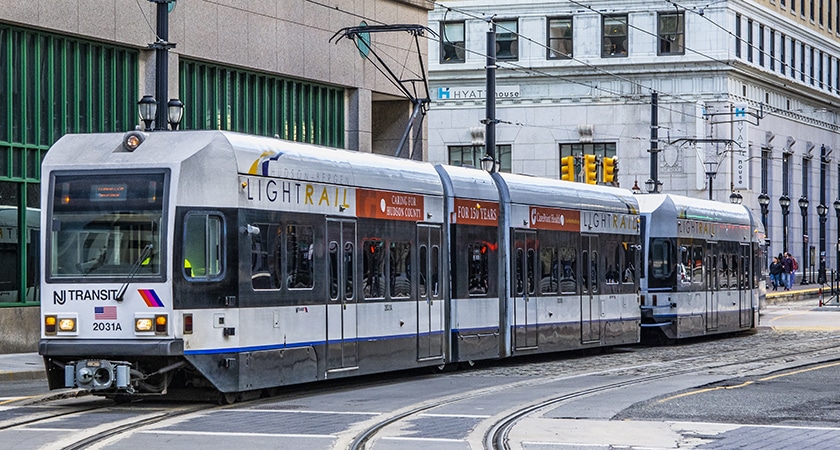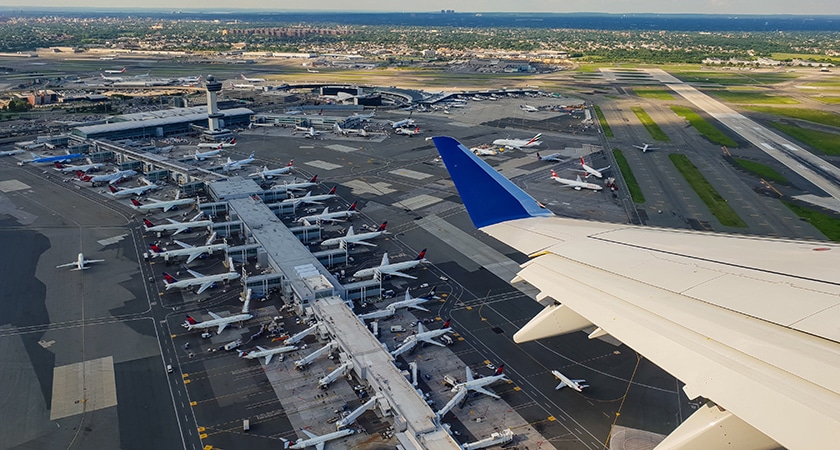
Teltronic, through its North American subsidiary PowerTrunk, was a pioneer in the introduction of TETRA technology in the United States. Teltronic developed the first TETRA deployment in USA (New Jersey Transit) and, to date, has significant deployments in transportation systems such as New York City, in airports such as JFK, Newark, Los Angeles, and San Francisco, and in various companies in the utilities sector.
How these deployments came to be is a story of perseverance, daring, ingenuity, and tenacity that has made PowerTrunk’s success as the TETRA market leader in North America possible.
For the details, we must travel back to 2009, by which time TETRA was already a successful technology that had demonstrated its potential in much of the world except North America, where it was a total unknown.
For certain reasons and interests, the certification requirements for radios had been updated worldwide except in the United States and Canada and, as a consequence, the TETRA modulation was not compatible with the official regulations in these two countries. These requirements applied to emission masks, i.e., the shape of the occupied radio spectrum.
The regulations in the US and Canada were based on previously available analog (non-linear modulation) technologies that were suitable for digital equipment such as P25, OpenSky, and other digital technologies that use non-linear modulation. “This means that they were really analog radios with digital voice codecs, but TETRA is a totally different concept, because not only is it digital, but it also has linear modulation. It doesn’t take on the typical shape of analog modulation and the emission mask was off by a very narrow margin,” says PowerTrunk CEO Jose Martin.
“This was a real problem. No matter how good the radio was, you went to the laboratory and it did not comply with the emission requirements of either country. It could not obtain a Type Acceptance Certificate and without it, it was impossible to implement a technology that, objectively, had been proven to be safer and more efficient,” Martin explains.
From that moment on, and fully convinced that TETRA was a useful solution for the North American market, the Teltronic team set to work. Previously, other manufacturers had tried to introduce TETRA in North America, but with a focus on regulatory change. “It’s a long road and not always successful, so we approached the problem with a different strategy. We wouldn’t try to change the standards, we would try to change our equipment so that it would comply with them,” points out Jose Martin.
With a significant R&D effort, Teltronic engineers managed to slightly compress the TETRA spectrum. Without going into too much technical detail, the solution was found in one of the TETRA modulation parameters called Alpha. The R&D team discovered that by changing the value of this parameter, which is standard, the spectrum was compressed to the norm, although the performance of the equipment was not exactly the same.

“We took this modified version of TETRA, which we called TI-DLMR (TETRA Interoperable Digital Land Mobile Radio), to a laboratory certified by the Federal Communications Commission (FCC) and also valid for Industry Canada (IC), which confirmed that it complied with the regulations, so it was accepted by both regulatory bodies and, once we got the certification, we could start submitting bids and the first successes were not long in coming,” explains Jose Martin.
FIRST IN CANADA
In Canada, in British Columbia, there were interested customers, including the utility company, BC Hydro, to which this modified version of TETRA was presented and PowerTrunk won the tender. It was the customer itself that contacted Industry Canada informing them that they had awarded a contract based on TI-DLMR, but would prefer to do it on TETRA, and asking them to change the rules, which Industry Canada did immediately, making BC Hydro’s the first TETRA deployment in North America.
Something similar happened in the United States. New Jersey Transit was aware of TETRA and was interested in its benefits, especially in terms of data transmission, but found that it was a technology that was not available in the country. When they heard that Teltronic had achieved TI-DLMR certification, they immediately got in touch, and a pilot project was developed that worked perfectly, and they were especially impressed by the audio quality. As Jose Martin recalls, “They literally told us that it was like going from black and white television to color”.
It was 2011, and this technology, which was not 100% standard TETRA although operationally it worked as such, had demonstrated its qualities and NJT was extremely satisfied with the results of the tests. NJT then put out a tender and the contract was awarded to PowerTrunk.
“This led to complaints from competitors that TETRA was not allowed in the US. There was a lot of confusion and we had several meetings with the Federal Communications Commission, explaining that we knew TETRA was not allowed, and that’s why we were offering TI-DLMR, which was registered and approved,” says PowerTrunk’s CEO.
New Jersey Transit decided to go ahead and at a later point, in September 2012, the FCC decided to amend the transmission rules to accept TETRA. “On the one hand, the TETRA Association (TCCA) had already made a previous request and, after evidence that there was a contract awarded to a TETRA manufacturer, with a ‘flavored’ version of TETRA, my personal interpretation is that the FCC preferred to change the rules because otherwise in the United States there would have been something that was not 100% standard,” Martin points out.
As a result, it was approved for use on certain frequencies and TETRA became available for use in the United States as well. Since then, the technology has grown steadily in this market and, to date, there are almost forty deployments in North America, most of which have been developed by PowerTrunk.


